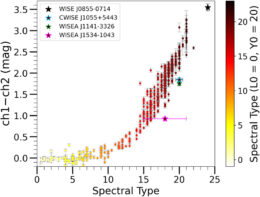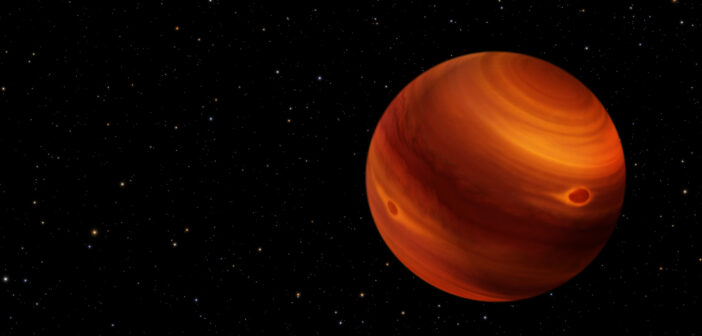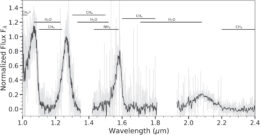Somewhere in between stars, which sustain hydrogen fusion in their cores, and giant gaseous planets, which do not, lies an intermediate class of cool, cloudy objects called brown dwarfs. A new look at a nearby brown dwarf shows how challenging it can be to classify these objects.
Neither Star nor Planet

The green object at the center of this image is the first ultra-cool brown dwarf discovered by NASA’s Wide-field Infrared Survey Explorer. [NASA/JPL-Caltech/UCLA]
Finding and classifying Y-type brown dwarfs has its own challenges, though. Part of the challenge comes from the fact that even objects assigned the same spectral type show significant differences. To understand whether these variations are due to metallicity, formation mechanism, or other factors, researchers must amass a sample of these hard-to-find objects.
Under Spectral Scrutiny
Enter CWISE J105512.11+544328.3, or W1055+5443 for short. Researchers initially assigned this object a spectral class of T8 — slightly more massive and warmer than a Y-type brown dwarf — but an updated distance measurement placed it closer to Earth, implying a lower luminosity and nudging its spectral type down to Y0. To confirm this spectral-type assignment and learn more about this nearby brown dwarf, Grady Robbins (University of Florida) and collaborators analyzed archival photometry from the Spitzer Space Telescope and collected new spectra using the Keck II telescope.

W1055+5443 (blue star) compared to other brown dwarfs for which Spitzer data exist. [Robbins et al. 2023]
Unusual Properties
As brown dwarfs age, they cool and contract. This means that brown dwarfs that are young tend to have earlier spectral types (M and L) and lower surface gravity, and brown dwarfs that are old tend to have later spectral types (T and Y) and higher surface gravity. Based on its spectral type, W1055+5443 should be an old brown dwarf with high surface gravity, but modeling suggests that its surface gravity is low — is this object unexpectedly young?
Robbins and collaborators found that W1055+5443 is likely a member of the Crius 197 moving group, a collection of ten stars moving together through space. Many of the stars in this group have ages around 180 million years, implying that W1055+5443 is similarly youthful, though some group members are much older. If the 180-million-year estimate proves correct, this suggests that W1055+5443 is a young brown dwarf with a mass just 4–6 times that of Jupiter, placing it well within the realm of planet masses!The authors note that these estimates are preliminary and await further investigation. Spectroscopy from JWST would allow researchers to pin down whether the object belongs to the Crius 197 moving group, determine its metallicity, and investigate its unusual spectral features, and longer-wavelength photometry would provide an accurate estimate of its temperature.
Citation
“CWISE J105512.11+544328.3: A Nearby Y Dwarf Spectroscopically Confirmed with Keck/NIRES,” Grady Robbins et al 2023 ApJ 958 94. doi:10.3847/1538-4357/ad0043


